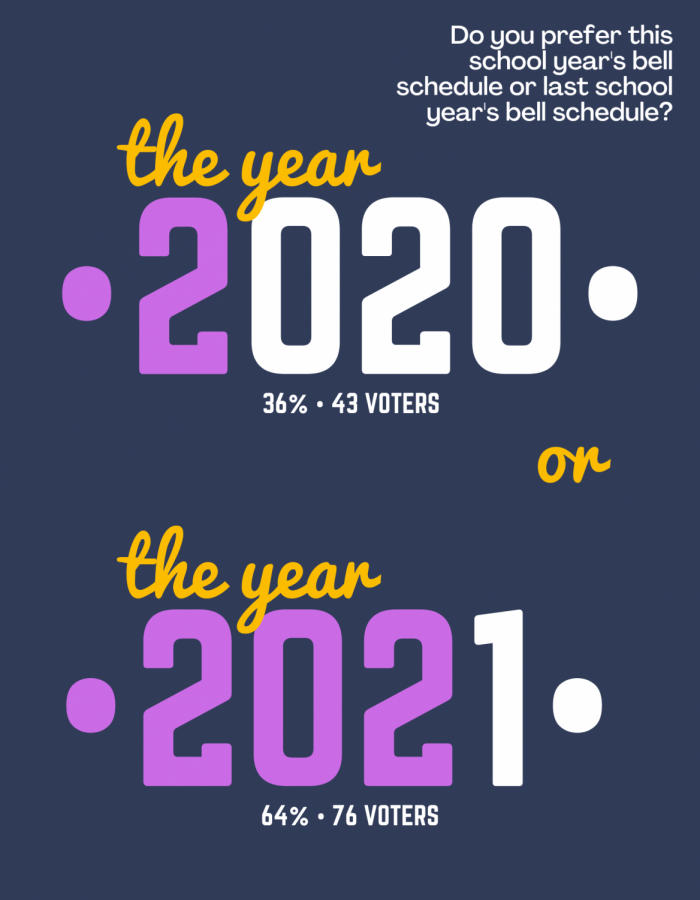Students, teachers compare school schedules
On Tuesday, @MHSMentor Instagram asked students which bell schedule they prefer: this school year’s or last school year’s. Out of 119, 36% voted last year and 64% favor this year.
September 12, 2021
The COVID-19 pandemic created an opportunity for Manhattan High School to experiment with a full block schedule during the second semester of last school year, which was known as the On-Site with Remote Modified Block schedule. This schedule structure of four block days and one seven-hour day strayed from the Regular Modified Block model, which consists of two block days and three seven-hour days. As we revert back to the Regular Modified Block schedule, students and teachers are reflecting on the benefits and disadvantages of each schedule structure.
Junior Jessica Zhang prefers this year’s Regular Modified Block because it prevents procrastination throughout the week.
“[During last year’s block schedule], I never really was motivated after class because I didn’t have the same class the next day,” Zhang said.
Zhang also enjoys the Regular Modified Block because it allows the students to move around throughout the strenuous school day.
“I think the course load is a lot easier for me with the regular modified block because my classes are a lot harder this year, and it gets really stressful when I’m in the same class for so long,” Zhang said.
Senior Deeshana Nilaweera acknowledges the advantages and downfalls of both types of block schedules.
“Last year, I liked the block schedule because I only had to go to four classes each day, which gave me a whole day between certain classes to get my work done,” Nilaweera said.
Now, Nilaweera enjoys the Regular Modified Block’s three seven-hour days because it is easier for the students’ attention spans.
“All in all, I am content with either schedule, but I prefer the block schedules we had last year,” Nilaweera said.
According to junior Eli Conley, the full block schedule provided students with more time to complete coursework.
“[On full block days], you didn’t go to classes as much, so teachers didn’t assign you as much work,” Conley said. “And we had Advisory twice a week, so you got extra time to do work.”
Conley says that most teachers are still dedicating block periods to test-taking, but shorter class periods contribute to more assignments outside of school.
“I can get more done during an hour and a half class period than a fifty minute class period,” Conley said.
According to Social Studies teacher Kent Hildebrand, block days can be more productive if planned properly.
“[Productivity] does vary from student to teacher,” Hildebrand said. “If you structure that 90 minutes right, I think you can get more done because you can start and finish things.”
However, with limited attention spans and different levels of classroom engagement, Hildebrand contends that many students likely enjoy this year’s Regular Modified Block.
“I think [students] probably like the speeds of the days and the pace on the regular days,” Hildebrand said, “so [the current] schedule is a good mix.”


